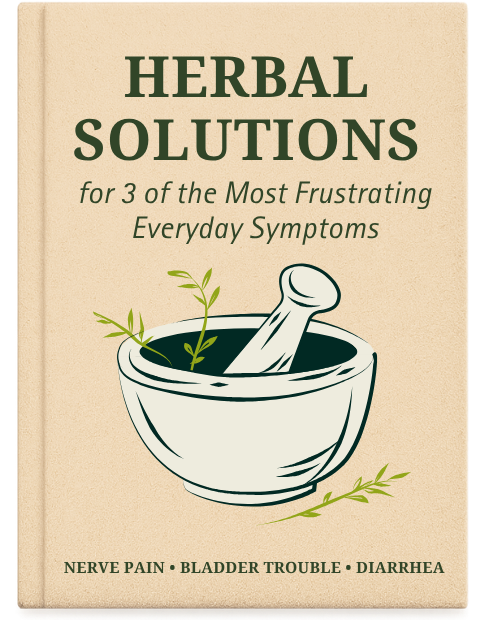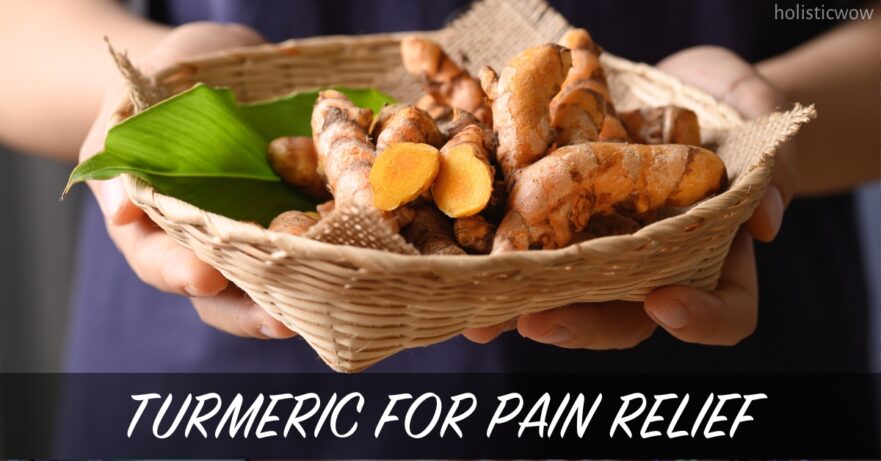What Is Turmeric and How Does It Help with Pain?
Turmeric is a spice made from the root of the Curcuma longa plant. Its key active ingredient, curcumin, is well-known for its anti-inflammatory and antioxidant properties, which may help manage pain and inflammation.
These properties make turmeric a potential natural remedy for conditions like arthritis and joint pain. Research suggests that curcumin could help reduce swelling andimprove pain symptoms, offering relief for individuals with chronic pain, such as those with knee osteoarthritis.
Some studies indicate that turmeric may provide pain relief comparable to non-steroidal anti-inflammatory drugs (NSAIDs) for some people, with a lower risk of side effects. However, the optimal dosage, frequency, and formulation for maximum benefit are still being studied.
Turmeric can be consumed in various forms, including capsules, powders, or teas, making it a versatile addition to your routine. Combining turmeric with black pepper, which contains piperine, can significantly enhance curcumin’s absorption and effectiveness.
Beyond pain relief, turmeric’s anti-inflammatory effects may contribute to overall health benefits, such as supporting recovery from exercise-induced muscle soreness and managing conditions like metabolic syndrome and anxiety.
Incorporating turmeric into your diet could help reduce inflammation throughout the body, promoting better overall well-being.
What Are the Traditional Uses of Turmeric in Herbal Medicine?
Turmeric has long been valued in traditional medicine for its anti-inflammatory and antioxidant properties. Traditionally, it has been used to help manage conditions such as pain, asthma, and digestive issues.
Its inclusion in cooking, particularly in curry powders, enhances flavor and supports its potential health benefits when consumed as part of a balanced diet.
In Ayurvedic medicine, turmeric is a cornerstone remedy for addressing inflammation and pain, mainly because of its active compound, curcumin.
This has made turmeric a staple in traditional practices for thousands of years, where it has been used to support the management of skin disorders, respiratory issues, joint discomfort, and digestive problems.
Modern research suggests that turmeric may support pain relief< and physical function in conditions like knee osteoarthritis. Its effects are comparable to those of some non-steroidal anti-inflammatory drugs and exhibit a favorable safety profile .
Additionally, curcumin’s antioxidant and anti-inflammatory properties may aid in managing oxidative stress, metabolic syndrome, and even exercise-induced muscle soreness.
Turmeric’s incorporation into diets and traditional remedies underscores its value as a medicinal herb and a functional food with potential health-supporting properties.
What Are the Anti-Inflammatory Properties of Turmeric?
Turmeric’s anti-inflammatory properties are primarily attributed to curcumin, its active ingredient.
Curcumin is known for its potential to help reduce inflammation, swelling, and joint pain, particularly in conditions like arthritis.
Studies suggest that curcumin may be as effective as some non-steroidal anti-inflammatory drugs (NSAIDs) in improving pain and physical function in knee osteoarthritis, with fewer side effects. This makes turmeric a promising option for managing certain inflammatory health conditions.
Curcumin may also help modulate the immune response, which could further alleviate pain-related inflammation. However, it’s important to note that curcumin has low bioavailability, meaning the body does not easily absorb it.
Combining curcumin with piperine, a compound found in black pepper, has been shown to enhance its absorption and effectiveness significantly.
Turmeric is a widely available spice. It can be found in various forms, such as ground powder, capsules, or extracts, in health food stores, pharmacies, and supermarkets.
While turmeric may help reduce pain and inflammation, it is best used as part of a balanced approach to health and wellness.
Always consult a healthcare provider before starting any new supplement, especially if you have existing health conditions or take medications.

How Does Curcumin in Turmeric Provide Pain Relief?
Curcumin, the active turmeric compound, may help relieve pain by inhibiting inflammatory pathways in the body.
This action can reduce symptoms such as joint swelling and stiffness commonly associated with arthritis. Curcumin has the potential to enhance mobility and comfort for individuals experiencing chronic joint pain by addressing inflammation.
Curcumin is widely recognized for its anti-inflammatory properties, which may make it a valuable option for managing inflammation-related pain. Research suggests that curcumin supplementation can improve pain and physical function in individuals with knee osteoarthritis, with effects comparable to NSAIDs but without significant adverse effects.
By supporting pain management through its anti-inflammatory properties, curcumin offers a promising natural approach for individuals seeking relief from joint pain and inflammation.
How Can the Bioavailability of Curcumin Be Enhanced?
Curcumin has low bioavailability, meaning it is not easily absorbed or retained in the body. This can limit its effectiveness as a dietary supplement. However, there are ways to enhance absorption and maximize nutritional value.
One effective method is to consume curcumin with black pepper. According to research, black pepper contains piperine, a natural compound that can significantly increase curcumin’s absorptionby up to 2000%.
Additionally, pairing curcumin with healthy fats, such as those found in oils, nuts, or avocados, may further improve its absorption. This is because curcumin is fat-soluble, meaning it dissolves better in fat, which helps the body process it more efficiently.
Combining curcumin with piperine or fats may enhance its potential benefits, such as reducing inflammation and supporting pain relief.
Studies suggest that curcumin, thanks to its antioxidant and anti-inflammatory properties, may help manage conditions like arthritis, metabolic syndrome, and exercise-induced muscle soreness.
These practices can help you get the most out of curcumin supplements or turmeric in your diet.
How Does Turmeric Improve Joint Pain and Function?
Turmeric may help improve joint pain and function by reducing inflammation and swelling in the joints.
Curcumin, the active component, is known for its potent anti-inflammatory properties. These could potentially alleviate symptoms associated with arthritis and other joint disorders.
Research suggests that this reduction in inflammation may lead to enhanced mobility and a better quality of life for individuals experiencing joint pain.
Studies indicate that turmeric or curcumin supplements may relieve pain and improve joint function, particularly in conditions like knee osteoarthritis. Turmeric has shown similar effectiveness to some non-steroidal anti-inflammatory drugs (NSAIDs) in managing joint pain but with fewer reported side effects.
Incorporating turmeric into your diet or taking it as a supplement might offer relief from joint discomfort and support better joint function. For optimal benefits, combining curcumin with bioavailability enhancers like piperine (found in black pepper) can significantly improve its absorption in the body.

What Are the Benefits of Turmeric for Osteoarthritis?
Turmeric may offer several health benefits for individuals with osteoarthritis, particularly in managing symptoms like joint pain, swelling, and stiffness.
These effects are primarily attributed to its anti-inflammatory properties, which can help improve joint function and mobility.
Research suggests that curcumin may relieve pain and enhance physical function in people with osteoarthritis. Studies indicate that turmeric’s effects on pain and mobility are comparable to those of non-steroidal anti-inflammatory drugs but with fewer reported side effects.
Overall, turmeric’s role in reducing inflammation and supporting joint health makes it a valuable addition to osteoarthritis management.
However, individuals should consult their healthcare provider before starting any new supplement to ensure it is safe and appropriate for their specific needs.

Can Turmeric Be as Effective as Ibuprofen for Pain Management?
Turmeric, particularly its active compound curcumin, may help manage pain and inflammation in conditions like osteoarthritis.
Research suggests that turmeric could provide pain relief comparable to ibuprofen, a commonly used non-steroidal anti-inflammatory drug (NSAID). Studies indicate that turmeric may reduce inflammation and improve physical function in individuals with knee osteoarthritis, showing similar efficacy to ibuprofen in some cases.
However, while these findings are promising, more research is needed to confirm turmeric’s effectiveness across broader populations and to determine optimal dosing, frequency, and formulation.
Additionally, curcumin has low bioavailability, meaning the body does not easily absorb it. Combining curcumin with substances like piperine in black pepper can significantly enhance its absorption and potential benefits.
Turmeric is generally considered safe and may have fewer side effects than NSAIDs, which are associated with risks like gastrointestinal irritation. That said, turmeric’s long-term safety and potential side effects require further investigation.
If you’re considering using turmeric for pain management, you should discuss it with your healthcare provider to ensure it’s appropriate for your specific needs.
How Does Turmeric Compare to NSAIDs in Pain Reduction?
Turmeric, particularly its active compound curcumin, may offer pain reduction benefits comparable to non-steroidal anti-inflammatory drugs (NSAIDs), such as ibuprofen and diclofenac, for some individuals with certain conditions.
Research suggests that turmeric’s anti-inflammatory properties could help manage pain and stiffness, especially in conditions like arthritis. Curcumin targets inflammatory pathways in the body, including inhibiting cyclooxygenase-2 (COX-2), a mechanism also utilized by NSAIDs. This shared action may contribute to its potential effectiveness in pain reduction.
While turmeric is generally considered to have a better safety profile and is associated with fewer side effects than NSAIDs, its efficacy is not yet fully understood. More research is needed to confirm these findings across broader populations and conditions.
Studies indicate that turmeric could be a natural alternative to traditional NSAIDs for pain relief, particularly for individuals seeking options with potentially fewer risks.
However, optimal dosing, frequency, and long-term benefits remain areas that require further investigation.
Thanks to its anti-inflammatory properties and favorable safety profile, turmeric shows potential as a complementary approach to managing pain.
Should Turmeric Be Used as a Complementary Therapy for Pain Relief?
Turmeric may serve as a complementary therapy for pain relief, particularly for conditions like arthritis and osteoarthritis.
Its active compound, curcumin, is known for its anti-inflammatory and antioxidant properties, which could help reduce pain and improve joint function.
Research suggests that turmeric may provide benefits comparable to non-steroidal anti-inflammatory drugs (NSAIDs) for knee osteoarthritis, with a lower risk of side effects.
However, consulting with a healthcare provider before starting any new supplement regimen is essential.
This ensures safety, particularly when turmeric is used alongside conventional therapies. Its bioavailability can vary, and it may interact with certain medications.
Turmeric is often combined with piperine, a compound found in black pepper, to enhance its absorption. Piperine has been shown to improve curcumin’s bioavailability.
When used appropriately, turmeric can be a valuable addition to traditional treatments. It offers a natural option for managing pain and inflammation.
Are There Any Side Effects of Using Turmeric for Pain Relief?
Turmeric is generally considered safe when used in moderation and may help relieve pain due to its anti-inflammatory properties.
However, it’s important to be aware of potential side effects.
High doses or long-term use of turmeric could lead to gastrointestinal discomfort, such as:
- abdominal pain,
- nausea,
- or diarrhea.
While rare, excessive use has also been associated with liver injury in some cases.
To ensure safety, it’s crucial to stick to recommended dosages and consult a healthcare provider, especially if you are taking medications or have underlying health conditions.
This is particularly important because turmeric may interact with certain drugs, such as blood thinners, and could pose risks for some individuals.
By using turmeric responsibly and under medical guidance, you can enjoy its potential benefits for pain relief while minimizing the risk of side effects.
Is Turmeric Safe for People with Chronic Diseases?
Turmeric is generally considered safe for people with chronic diseases when used appropriately.
However, it is essential to consult a healthcare provider before starting turmeric, especially if you have chronic conditions or are on medication. This precaution helps avoid potential interactions with treatments like chemotherapy or blood thinners.
Individuals with gallbladder disease or those prone to gastrointestinal issues should be cautious. Turmeric can lower blood sugar levels, so individuals with diabetes need to monitor their levels closely.
Use turmeric within recommended dosages and seek medical advice if any adverse effects occur.
By consulting a healthcare provider and following recommended guidelines, individuals with chronic diseases can safely incorporate turmeric into their wellness routines to support pain management and overall health.
Herbal Preparations and Recipes for Pain Relief
Herbal remedies may offer complementary support in managing pain, mainly due to their potential anti-inflammatory properties. Turmeric, with its active component curcumin, is widely researched for its possible role in alleviating pain associated with conditions like arthritis.
The following recipes incorporate turmeric to help support inflammation management and improve comfort. Always consult a healthcare provider before starting any new herbal regimen, especially if you have existing health conditions or are taking medications.
Turmeric Pain Relief Tea
Ingredients:
- 1 teaspoon dried turmeric root (or ½ teaspoon turmeric powder)
- 1 cup of boiling water
- A pinch of black pepper (to support absorption)
- Optional: 1 teaspoon honey (for taste)
Preparation:
- Combine the turmeric and black pepper in a teapot.
- Add boiling water and steep for 10 minutes.
- Strain and add honey if desired. Drink 1-2 cups daily.
This simple tea utilizes turmeric’s potential anti-inflammatory properties to help relieve pain. Adding black pepper may enhance curcumin absorption, potentially improving its effectiveness.
Warnings: Before using turmeric, individuals on blood thinners, with gallbladder conditions, or experiencing gastrointestinal issues should consult a healthcare provider.
Anti-Inflammatory Herbal Blend for Pain Relief
Ingredients:
- 1 teaspoon dried turmeric root (or ½ teaspoon turmeric powder)
- 1 teaspoon dried chamomile flowers
- ½ teaspoon dried ginger root
- ½ teaspoon dried white willow bark
- 1 cup of boiling water
Preparation:
- Combine all the herbs in a teapot.
- Add boiling water and steep for 15 minutes.
- Strain and drink 1 cup two to three times daily.
This herbal blend combines turmeric with ginger, traditionally used for its potential anti-inflammatory effects, and white willow bark, which contains salicin, a natural compound that may support pain relief. Chamomile adds a calming effect, making this blend suitable for overall wellness and comfort.
Warnings: White willow bark should be avoided by individuals with allergies to aspirin or salicylates. Pregnant or breastfeeding women should consult a healthcare provider before using these herbs. Those on medications, especially blood thinners or with gastrointestinal conditions, should seek medical advice before using this blend.
With their potential anti-inflammatory properties, these herbal preparations aim to support pain management. However, they should not replace conventional medical treatments. Always consult a healthcare provider before starting any new herbal regimen, particularly if you have existing health conditions or are taking medications.


Comments 1
What are the dosage requirements for an elderly gentleman? I’m ok with taking minimums over time and I not interested in taking TC for any length of time.
I read and enjoyed the information and look forward to a TC therapy.
Kind regards, Joseph